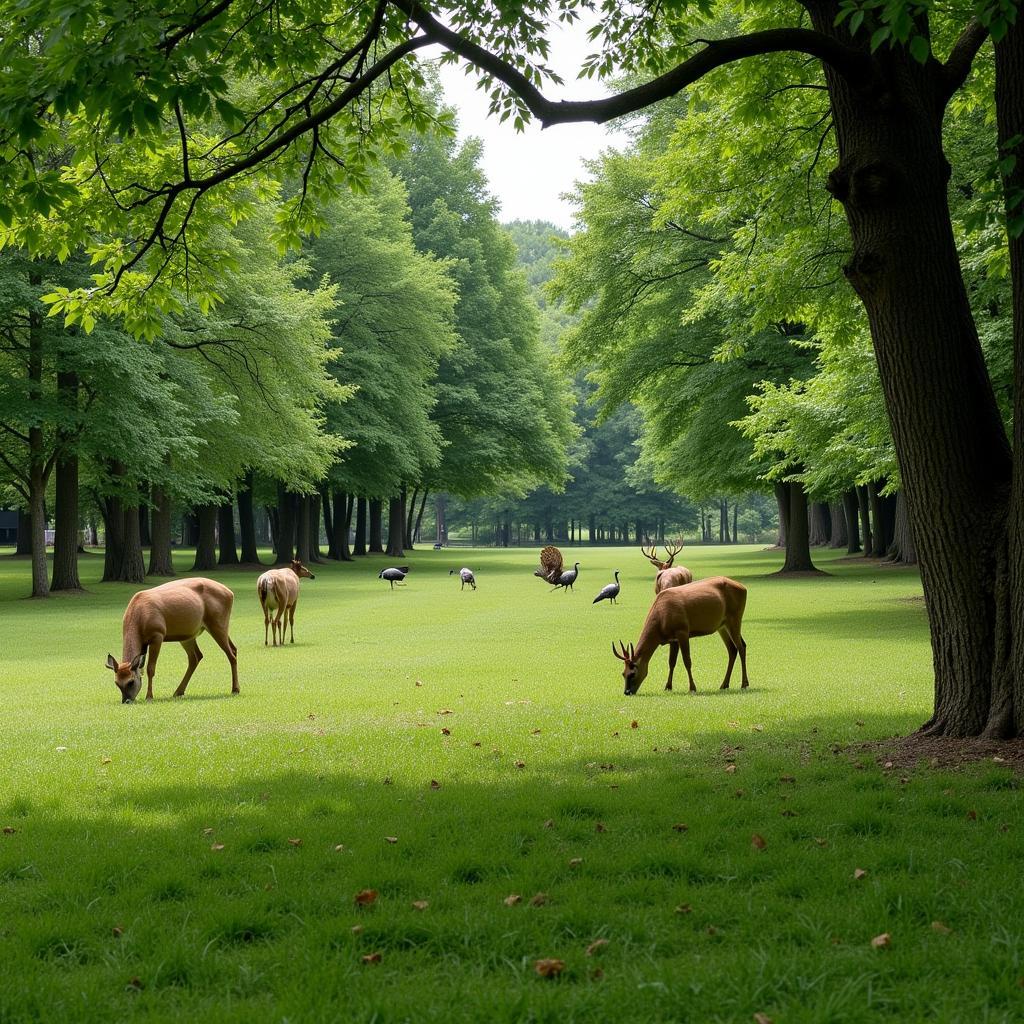Shade Food Plot Mix offers a crucial advantage for hunters looking to attract deer and other wildlife, even in challenging, low-light environments. Understanding how to effectively utilize these specialized seed blends can significantly improve your hunting success. Let’s dive into the world of shade food plot mixes and explore how they can transform your hunting grounds. We’ll cover everything from choosing the right mix for your region to planting and maintaining it for optimal growth. For hunters dealing with poor soil conditions, check out our guide to the best food plot seed for poor soil.
Choosing the right shade food plot mix is the first step towards a successful hunting season. Factors like soil type, climate, and the specific wildlife you’re targeting will influence your decision. For instance, a mix designed for whitetail deer in the Northeast might be drastically different from one intended for turkeys in the South. Analyzing your specific needs is paramount. Look for mixes containing shade-tolerant species like clover, chicory, and brassicas. These plants can thrive even under dense canopy cover, providing a consistent food source for wildlife throughout the hunting season. Learn more about clover chicory food plots for a detailed overview of these beneficial plants.
Selecting the Ideal Shade Food Plot Mix
When selecting a shade food plot mix, consider the following factors:
- Sunlight Exposure: Assess how much sunlight your plot receives throughout the day. Even “shade” areas might have varying degrees of sunlight.
- Soil pH: A soil test can help determine the acidity or alkalinity of your soil, guiding you towards a suitable mix.
- Wildlife Preferences: Different animals have different dietary needs. Research the preferred food sources of the wildlife you’re trying to attract.
- Weed Competition: Choose a mix that can outcompete common weeds in your area.
- Budget: Shade food plot mixes come in various price ranges. Determine a budget beforehand.
Knowing the best food plot mix for deer will significantly increase your chances of a successful hunt.
Preparing Your Shade Food Plot for Planting
Proper site preparation is crucial for successful food plot establishment. Clearing existing vegetation, tilling the soil, and applying necessary amendments like lime or fertilizer are essential steps. This ensures your chosen seed mix has the best possible chance to germinate and thrive.
- Clear the area: Remove existing vegetation, rocks, and debris.
- Till the soil: Break up the soil to improve aeration and drainage.
- Amend the soil: Based on your soil test, add lime or fertilizer as needed.
- Spread the seed: Evenly distribute the seed according to the package instructions.
- Lightly rake: Cover the seed with a thin layer of soil.
- Water: Provide adequate moisture, especially during germination.
Maintaining Your Shade Food Plot
Once your shade food plot is established, ongoing maintenance is essential. Regular mowing, fertilization, and weed control will ensure its longevity and productivity. This provides a consistent food source for wildlife, attracting them to your hunting grounds throughout the season. You might also want to consider a 1/4 acre food plot depending on your needs and available space.
- Mowing: Control weeds and encourage branching.
- Fertilization: Replenish soil nutrients as needed.
- Weed Control: Address weed infestations promptly.
- Soil Testing: Periodic soil tests can help you adjust your maintenance practices.
Frequently Asked Questions about Shade Food Plot Mix
1. What is a shade food plot mix? A shade food plot mix is a blend of seeds specifically selected to thrive in low-light conditions under tree canopies.
2. When is the best time to plant a shade food plot mix? The optimal planting time depends on your region and the specific mix, but generally, early spring or fall are ideal. Find out more about when to plant turkey food plots for specific timing guidelines.
3. How do I choose the right shade food plot mix? Consider factors like sunlight exposure, soil pH, wildlife preferences, and weed competition.
4. How do I prepare my shade food plot for planting? Clear the area, till the soil, amend as needed, spread the seed, rake lightly, and water.
5. How do I maintain my shade food plot? Mow regularly, fertilize as needed, control weeds, and conduct periodic soil tests.
Conclusion
Utilizing a shade food plot mix can significantly enhance your hunting success by providing a reliable food source for wildlife in areas with limited sunlight. Choosing the right mix, preparing the site properly, and implementing ongoing maintenance are crucial steps for maximizing the effectiveness of your shade food plot.
 Thriving Shade Food Plot Attracting Wildlife
Thriving Shade Food Plot Attracting Wildlife
Need assistance with your food plot journey? Contact us at Phone Number: 02437655121, Email: minacones@gmail.com, or visit us at 3PGH+8R9, ĐT70A, thôn Trung, Bắc Từ Liêm, Hà Nội, Việt Nam. We offer 24/7 customer support. You might also find helpful information on our best food plot mix for deer page.